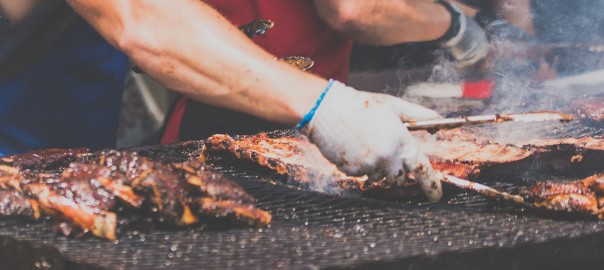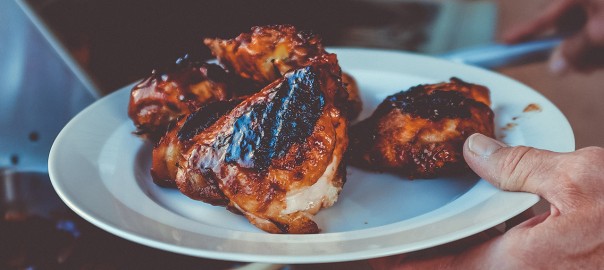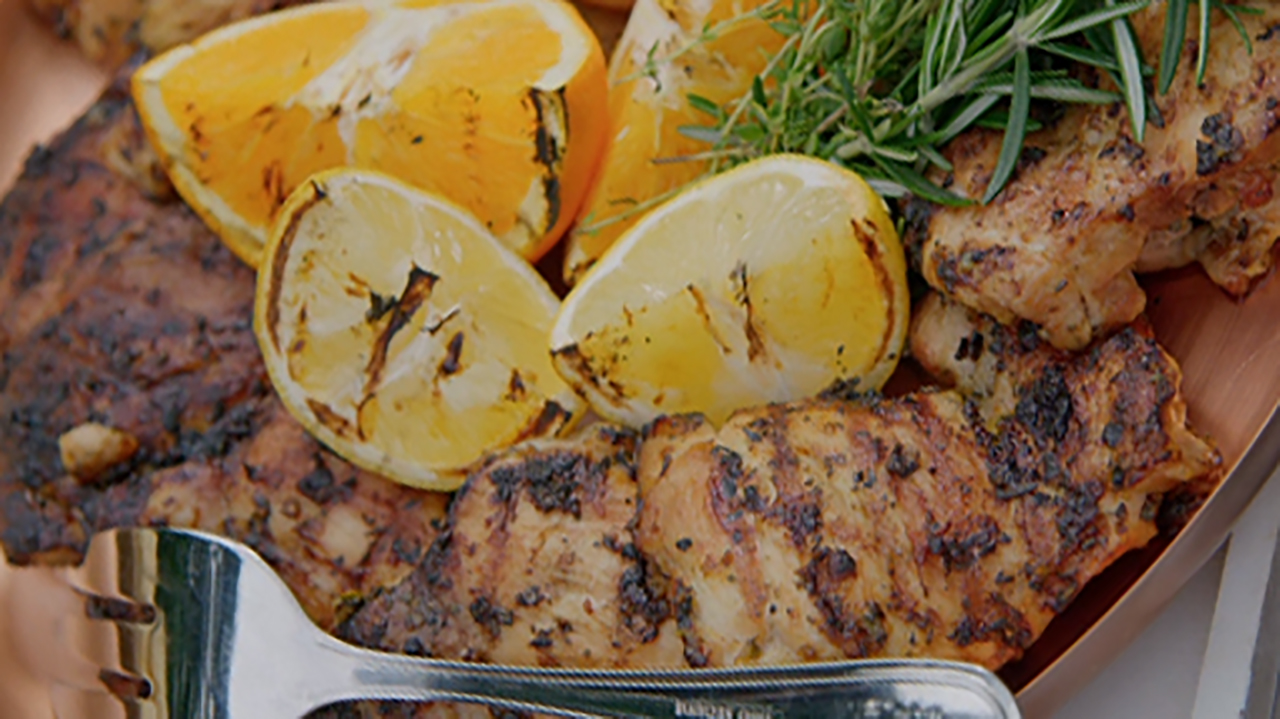Smoking meat is a prehistoric culinary art. In the past, the technique was used to preserve protein-rich foods. Smoking dehydrates meat and imparts antibacterial properties that keep it from spoiling quickly. While our ancestors used the method to preserve red meat and fish, today smoking is used for all kinds of meat — not just as a preservation method — and the enhanced flavor makes it quite the delicacy.
We’re most familiar with smoked meats in the form of barbecue: When meat is treated to the low and slow treatment in a smoker, connective tissues and collagen within the meat break down, resulting in ultra-flavorful, ultra-tender food. Top that off with the bevy of barbecue sauces we’ve invented — vinegar-based, sweet, thick and tangy, you name it — and you’re in heaven.
This guide delves into the ins and outs of smoking meat at home — from equipment to wood chips to the best cuts of meat to smoke.
Equipment
There are several fancy smoker options, from pellet smokers to vertical electric smokers to offset smokers for the true meat smoking aficionado. These smokers are specially designed for applying indirect heat at steady low temperatures, and most cost several hundreds of dollars. While cooking with a Traeger wood pellet grill can be amazing, if you’re a novice who’s not ready to invest too heavily into smoking equipment, have no fear.
Everyday gas grills and charcoal grills can be manipulated to smoke meat with just a little effort.
Gas grills can be tricky to use as smokers, as they’re designed to cook meat over direct heat at high temperatures — the opposite of smoking, which is low, indirect heat over a long period of time.
With a little patience, however, a gas grill will smoke your meat. You’ll need to build an indirect heat zone and a direct heat zone within your grill, making sure to keep your meat in the indirect zone. Experiment with your burners until you’re able to bring the internal temperature to around 250°F which you can check with a meat thermometer (for most cuts of meat, anyway).
You’ll need a smoke box to hold your — soaked and drained — wood chips. Newer gas grills sometimes come with a built-in metal smoker box, but you can also purchase a heavy duty metal smoker box or make an inexpensive one at home by placing the wood chips in a foil pan, covering it with heavy-duty aluminum foil, and adding slits with a knife.
It’s a good idea to set up a drip pan to collect the drippings of your meat. Also, be sure to add a small amount of liquid to the drip pan — like water, apple juice, or beer — to add moisture and keep the drippings from drying out. Don’t set the pan directly on top of the burners, but rather on a grate, with another grate above for the meat.
As for a kettle or charcoal grill, like a traditional Weber, things are a little simpler. Remove the cooking grate from your grill and place the drip pan on one side. Remember to fill it with some liquid. Next, pile up your coals or lump charcoal on the opposite side of the grill.
Once the coals are white hot, you can add your wood and then smoke your meat over the drip pan. While you’ll occasionally need to open the grill to add more coal or wood, try not to disturb the smoking process.
Cuts of Meat
In truth, you can smoke pretty much any kind of meat or seafood. Poultry, red meat, pork, fish are all fair game — game meat, like venison, is also great when smoked.
But, if you’re looking for meats that respond really well to the smoker, you’ll actually want to aim low, rather than high. Low-cost, tougher cuts of meat tenderize when smoked low and slow.
For example, try Boston butt — or simply pork butt as it’s also simply called — for sumptuous pulled pork. Be sure to rub your pork butt amply with your desired spices — we like this smoky coffee rub recipe. Other pork options include ribs, like this brown sugar rub and mustard barbeque sauce-laced recipe. You can also smoke sausages for a complex, savory flavor.
While you can smoke leaner cuts like pork loin, it’s not ideal, as it responds better to grilling or roasting than smoking.
Beef brisket is the king of smoked meat, and the perfect cut when it comes to smoked beef. Give this smoked brisket with citrus marinade a whirl. But one thing to remember is not to smoke steaks—seriously, a simple grill or hot skillet is a better bet.
Poultry like whole chickens and turkeys turn out great in the smoker. You can also smoke chicken leg quarters if you’re not feeling up to the whole chicken yet. Here are some pecan smoked chicken wings for a super simple smoked recipe.
Wood Chips and Chunks
Not all wood is created equal when it comes to smoking meat. For one, you should never use any old wood you chopped down in your backyard — it’s potentially toxic. Never fear, though, there are plenty of other woods to experiment with as you smoke meat
While wood chips are sold more readily in most grocery stores and hardware stores, they tend to ignite quickly and burn out quite fast. This is not ideal for smoking low and slow. Wood chunks, on the other hand, burn for hours in a smoker. They do take a bit longer to ignite, but if you’re smoking meat, you’ve probably already committed the time.
If you use wood chips, be sure to soak them for at least 30 minutes before using. This will ensure they burn long enough to impart some flavor to the food.
What about the many varieties of wood? Getting the smoky flavor you want requires choosing the right wood.
Consider them on a scale of mild to intense. Fruity woods, like apple, peach, cherry, and pear, are light and sweet. They pair well with poultry, fish, and pork. Hickory, maple, pecan, and oak are stronger, but not overwhelming. Beef, game, and pork all go well with these woods. Mesquite is the most intense wood—it’s best used in moderation and with red meat.
Once you’ve mastered smoking with one wood, feel free to experiment with mixing woods for different flavors.
Now, you’re equipped with everything you need to know to get started on smoking meat. Get cooking!








